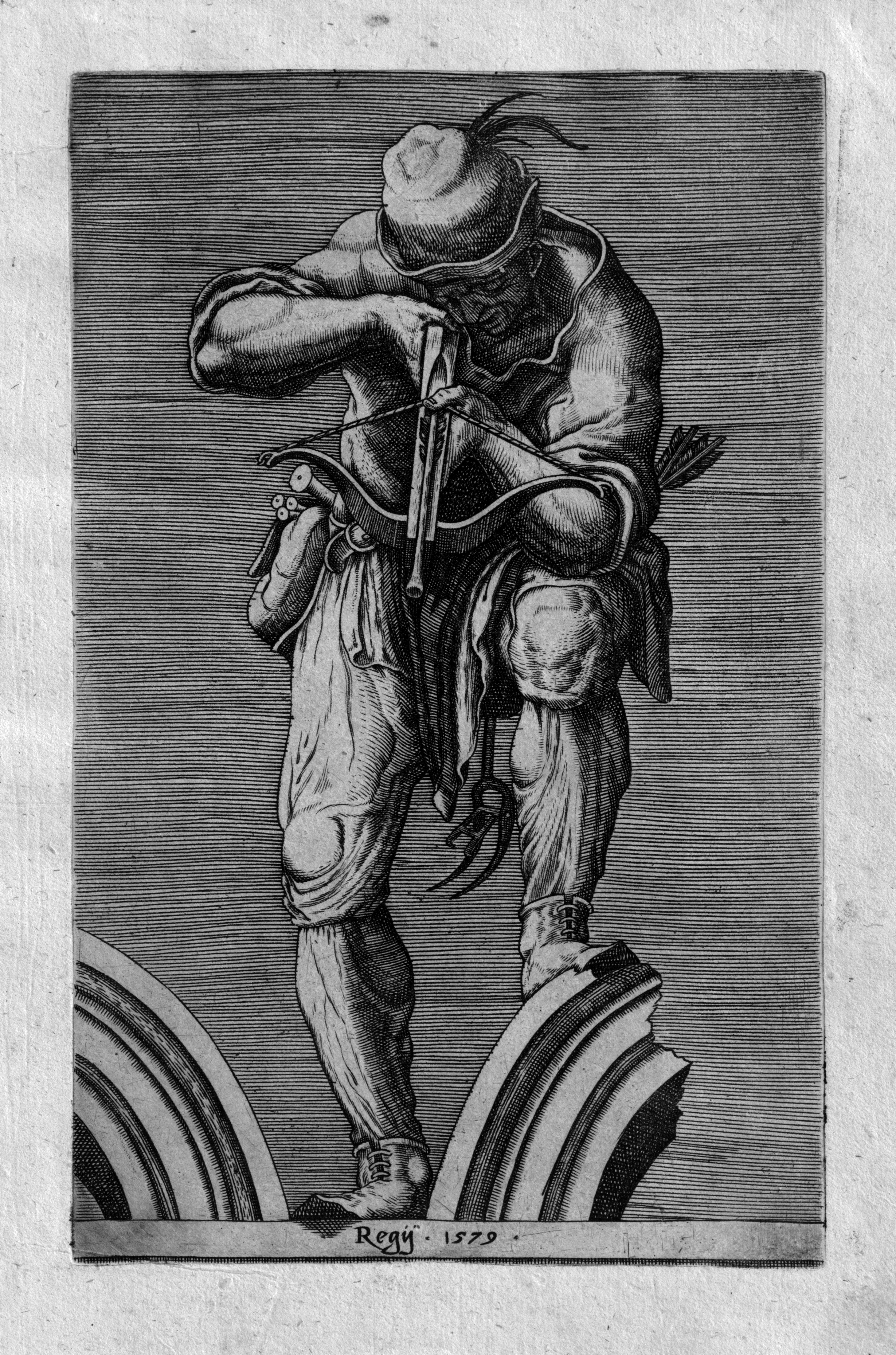Loading the page ...
Lelio Orsi
(1508/11–1587 Novellara)
After. A Man Firing a Crossbow. Engraving. 22 x 13.9 cm. 1579. Sellink (The New Hollstein, Cornelis Cort Rejected Prints) 48 II.
This evocative image of a man firing a crossbow radiates an extraordinary vigour. The pose of the rustically dressed marksman, his muscular leg resting on the fragment of an arch and the tense posture of his upper body, arms and head betray his absolute concentration on the target. In the past there was frequent conjecture as to who the artist was and what the origins of the work might be. For decades the engraving was regarded as the work of Cornelis Cort but this can be ruled out, given that the year 1579 is inscribed the lower margin of the print and Cort died in 1578. In his Cort edition of the New Hollstein Manfred Sellink therefore allocates the work to the category of ‘rejected prints’. It was Catherine King who ultimately succeeded in establishing a connection between the print and several drawings that might have served directly or indirectly as designs for the engraving. These drawings in Modena, Chatsworth, Paris, Princeton and Windsor Castle all arose in connection with facade paintings made by Lelio Orsi, an artist active in Reggio. They form part of a multi-figure scene with the coat of arms of the Orsi family and the familiar figure of the crossbowman at the centre. King regards the drawings as works devised by Lelio Orsi to decorate his house in Reggio. The Metropolitan Museum in New York and the National Gallery in Washington now classify the engraving as the work of Cort’s pupil, Cherubino Alberti (1553–1615), who demonstrably worked as an engraver for a series entitled Antiquarum Statuarum Urbis Romae. Quae in Publicis Privatisque Locis Visuntur Icones in which the print with the crossbowman was published in three editions between 1584 and 1621.
Contrary to Sellink’s reference to two states, the print actually exists in three states. In the final state the number 68 was inserted in the bottom left-hand corner of the sheet, which makes it clear that the present impression is of an earlier second state. A very fine, strong and inky impression with margins. Minor ageing and traces of handling, otherwise in excellent condition.
Literature: Catherine King, “An Etching and Lelio Orsi’s House”, in: Print Quarterly, 23 (2006), no. 2, pp. 176–182; Peter Parshall / Naoko Takahatake, “Cherubino Alberti, Lelio Orsi and Cornelis Cort”, in: Print Quarterly, 24 (2007), no. 4, pp. 430–431.
Contact us for further information